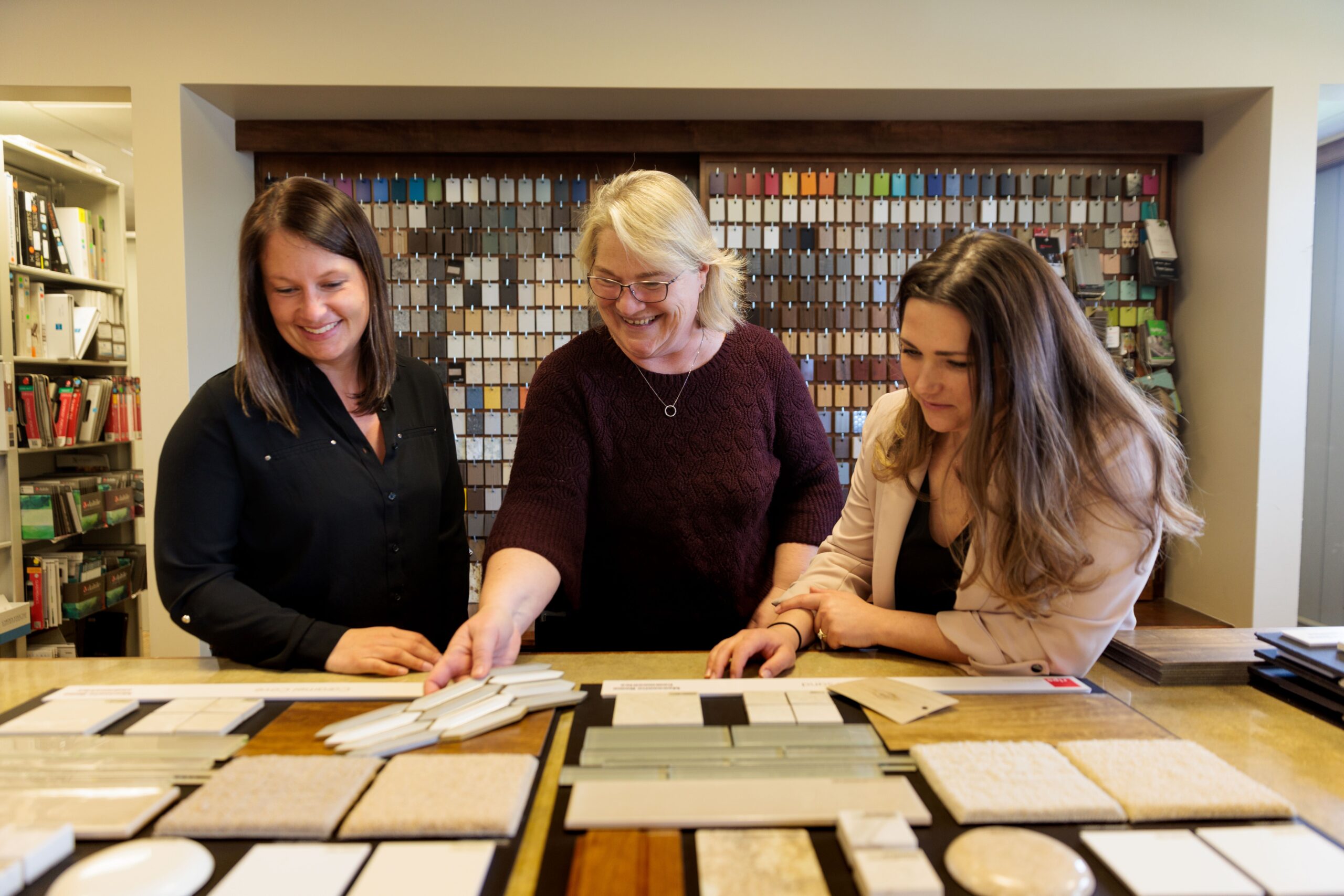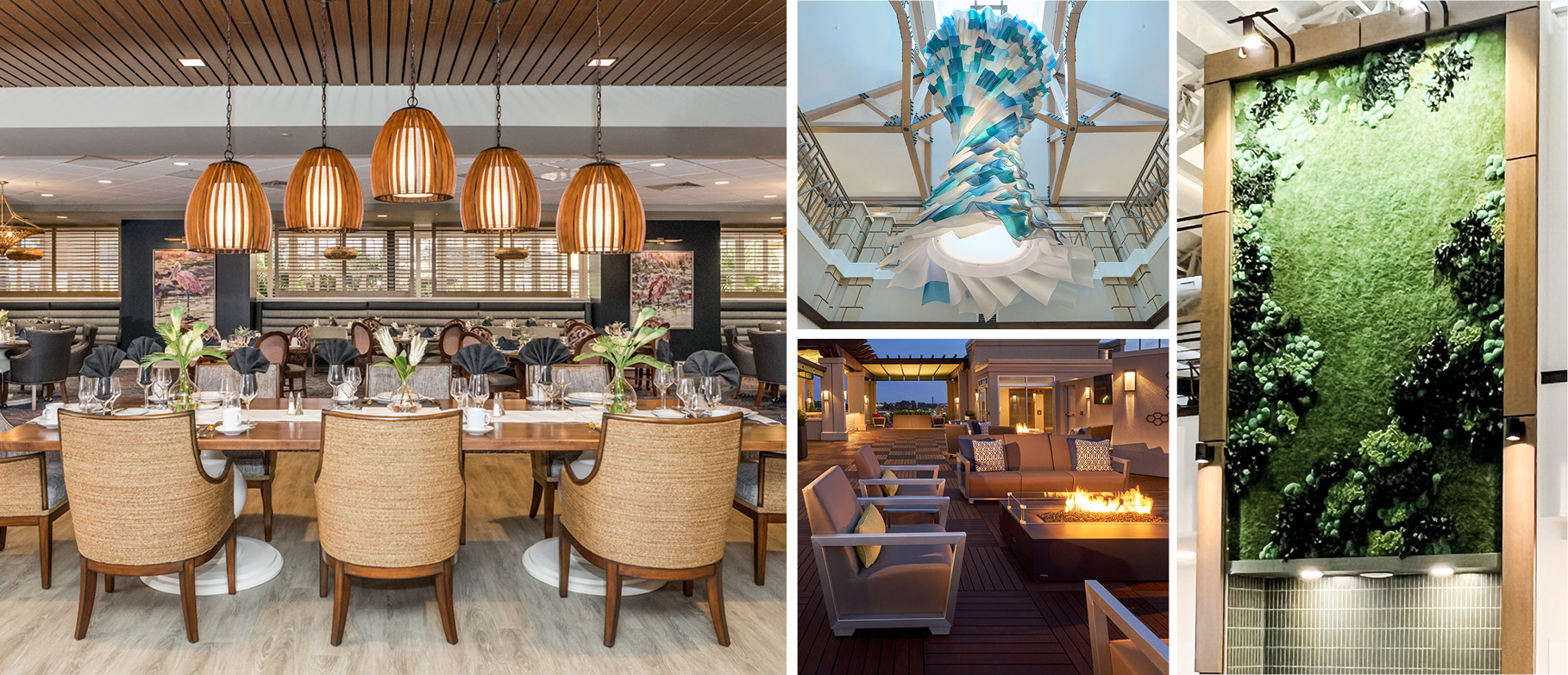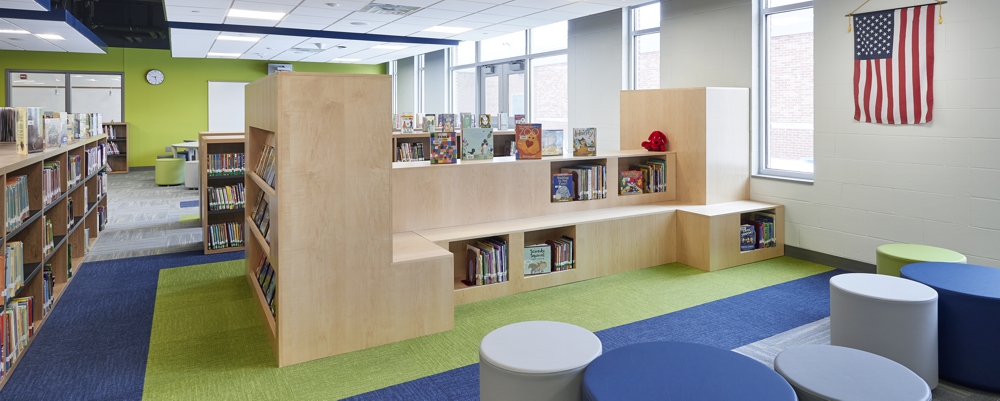Posts
Interior Design: Understanding the profession and the value of NCIDQ Certification
March 2, 2023
RLPS recently celebrated an interiors team member passing the National Certification for Interior Design Qualification (NCIDQ) exam and earning his professional competency and expertise in the trade. If you’re unfamiliar with the industry, you might not understand the importance of this milestone.
Stacy Hollinger Main, RLPS partner, shares that
“anyone who studies Interior Design should value his/her education enough to take the next step in the process which is [NCIDQ] examination. At RLPS, one of our missions is to help mentor young people in both architecture and interior design to take the leap into being a professional. This is one of the key goals of our practice – to cultivate personal development. Interior Design is a young profession, so it is imperative that we also educate the public to the level of standards that NCIDQ Certificate holders possess.”
Cheers to New Interior Design Trends This Year
January 6, 2023
The start of a new year means there are new interior design trends to explore and incorporate into living, learning and working spaces. The adage “What is old is new again” is a theme woven throughout this year’s interior design trends. These styles put a modern spin on classic ideas while others draw inspiration from the natural world. Vintage-inspired warm colors and natural floral designs appear in textiles, tile, paint colors and wallcoverings. Natural materials, such as the use of wood in caning and woven surfaces, elicit imagery of artisan makers who predate the industrialized production of goods.
We sat down with some of our interior designers to discuss interior design trends and how they are incorporating the trends into their projects.
BACK TO SCHOOL: Design for In-Person Learning During a Pandemic
September 19, 2021 This fall, millions of K-12 and college students headed back to school amid the ongoing COVID-19 crisis. Determining best practices for navigating this return has been challenging for administrators, teachers, students, and families alike. Design for in-person learning during a pandemic requires both flexibility and creativity. To that end, a number of manufacturers have developed innovative furniture and other classroom products to help K-12 school, colleges and universities quickly adapt to changing conditions and social distancing needs.
This fall, millions of K-12 and college students headed back to school amid the ongoing COVID-19 crisis. Determining best practices for navigating this return has been challenging for administrators, teachers, students, and families alike. Design for in-person learning during a pandemic requires both flexibility and creativity. To that end, a number of manufacturers have developed innovative furniture and other classroom products to help K-12 school, colleges and universities quickly adapt to changing conditions and social distancing needs.
Our team does not endorse any one product or manufacturer. The following is an overview of some of the products we have found while helping our clients review available options. Many of these offer benefits not only for today’s continually evolving safety priorities, but also for adaptable learning spaces beyond the current pandemic realities.
THE IN-BETWEEN: Elevator Lobby Design Strategies
April 30, 2021 The elevator lobby is often overlooked as an opportunity to reinforce your brand. Regardless of its size, this workhorse space is a prime circulation area that is accessed multiple times a day. When the elevator door opens, the lobby area beyond should provide an inviting and appropriate reference to your brand experience. With proper design consideration, the elevator lobby creates a strong first impression as well as a positive lasting impression for your building and campus brand.
The elevator lobby is often overlooked as an opportunity to reinforce your brand. Regardless of its size, this workhorse space is a prime circulation area that is accessed multiple times a day. When the elevator door opens, the lobby area beyond should provide an inviting and appropriate reference to your brand experience. With proper design consideration, the elevator lobby creates a strong first impression as well as a positive lasting impression for your building and campus brand.
Elevator Lobby Design Functionality
Typically, the elevator lobby at the main entrance of the building receives the most attention. However, common space is often at a premium for both senior living and higher education campuses. Upper level elevator lobbies provide opportunities for quieter gathering or informal study areas.
INTERIOR DESIGN FOR WELLNESS: Strategies to Encourage Physical Activity in Older Adults
March 31, 2021 Interior design for wellness spaces allows our team to encourage physical activity, especially for the older adults living in the senior living communities we serve. The benefits of physical activity are well documented, along with the fact that most people need more of it. This is especially true for older adults. A multi-year study by Mather Lifeways Institute on Aging has documented that people living in life plan communities report more healthy behaviors than other older adults, in part due to the ready availability of resources. In recent years, we have seen a number of life plan communities place renewed emphasis on resident health and well-being by expanding or updating their wellness facilities.
Interior design for wellness spaces allows our team to encourage physical activity, especially for the older adults living in the senior living communities we serve. The benefits of physical activity are well documented, along with the fact that most people need more of it. This is especially true for older adults. A multi-year study by Mather Lifeways Institute on Aging has documented that people living in life plan communities report more healthy behaviors than other older adults, in part due to the ready availability of resources. In recent years, we have seen a number of life plan communities place renewed emphasis on resident health and well-being by expanding or updating their wellness facilities.
3 Reasons Interior Designer Credentialing Matters
January 29, 2021 Interior designer credentialing reflects a commitment to the highest professional standards. Our firm focuses on senior living and educational facilities. Interior designers must put the health, safety and welfare of the people living, learning and working in those spaces at the forefront of design decisions. As we look forward to a post-COVID future, physical space impacts on health and well-being take on increased significance.
Interior designer credentialing reflects a commitment to the highest professional standards. Our firm focuses on senior living and educational facilities. Interior designers must put the health, safety and welfare of the people living, learning and working in those spaces at the forefront of design decisions. As we look forward to a post-COVID future, physical space impacts on health and well-being take on increased significance.
Starting with the Basics: Interior Design Professionals
Although sometimes used interchangeably with interior decorating, the interior design profession requires specialized education and training. Interior design professionals typically earn a Bachelor’s or Master’s degree in interior design and/or architecture, have worked in the field for two or more years, and hold National Council for Interior Design Qualification (NCIDQ) certification. The current exam encompasses seven core competencies of interior design: building systems, codes, construction standards, contract administration, design application, professional practice and project coordination. The NCIDQ examination is regularly updated to reflect current knowledge required to design safe, functional and innovative interior spaces.
POST-PANDEMIC PRIORITIES: Interior Design Strategies for Senior Living
October 31, 2020 For both the near term and into the future, senior living is going to look, feel, and function differently. An intensified focus on infection control has drastically altered day-to-day operations which are now viewed through the lenses of health, density, and safety. We are taking a different approach to senior living design strategies, such as space layouts, finish materials or furniture and equipment selections, to help senior living communities respond to changing priorities.
For both the near term and into the future, senior living is going to look, feel, and function differently. An intensified focus on infection control has drastically altered day-to-day operations which are now viewed through the lenses of health, density, and safety. We are taking a different approach to senior living design strategies, such as space layouts, finish materials or furniture and equipment selections, to help senior living communities respond to changing priorities.
THOUGHTFUL DESIGN: Interior Design for People with Dementia
August 31, 2020Professional interior design melds functional and aesthetic qualities of spaces with current codes to protect public health, safety and welfare. Interior design for people with dementia requires additional considerations to respect each individual without compromising dignity or comfort.

RLPS has been designing senior living communities since the 1950s. Specialized settings to support people with dementia emerged in the early 1990s and demand has increased significantly since that time. More recently, some senior living communities are moving away from a separate setting for people with dementia. This integrated living approach requires appropriate staff training, effective use of technology and community-wide supportive strategies to provide safe and comfortable living spaces for all senior residents regardless of cognitive abilities.
There is no single “right” answer. Our team draws on evolving research, specialized programs, and input from our clients to inform our approach to support the needs of people with dementia through interior design. For example, intentionally designed spaces for programs such as Montessori or Opening Minds through Art (OMA), function as a silent partner reinforcing these research-based initiatives.
NEW NORMAL: COVID-19 Design Impacts on Commercial Interiors
May 29, 2020 Change can be exciting, frustrating, challenging, disruptive, refreshing and overwhelming. And as illustrated by the COVID-19 pandemic, it can be abrupt and unexpected. The present challenges to creating safe workspaces, hospitality venues, educational spaces and senior living communities are daunting. Social connections and the use of shared and public spaces are confined to the parameters of social distancing guidelines. However, the renewed focus on healthy environments and infection control may also yield positive COVID-19 design impacts on commercial interior design. Our interior designers share their professional perspectives regarding COVID-19 design impacts, the current realities and anticipated lasting changes.
Change can be exciting, frustrating, challenging, disruptive, refreshing and overwhelming. And as illustrated by the COVID-19 pandemic, it can be abrupt and unexpected. The present challenges to creating safe workspaces, hospitality venues, educational spaces and senior living communities are daunting. Social connections and the use of shared and public spaces are confined to the parameters of social distancing guidelines. However, the renewed focus on healthy environments and infection control may also yield positive COVID-19 design impacts on commercial interior design. Our interior designers share their professional perspectives regarding COVID-19 design impacts, the current realities and anticipated lasting changes.
MAINTENANCE MATTERS: Guidelines to Maintain Resilient Flooring and Carpeting in Commercial Interiors
January 31, 2020
Aesthetic appeal is obviously an important component of interior finishes such as resilient flooring. However, there are a myriad of other factors required to provide more than just a positive first impression. As interior designers, we are constantly researching products and reviewing quality of construction, durability, and environmental impacts. We consider conversations with our clients regarding maintenance procedures and goals to be crucial for selecting the most appropriate product for each application.
